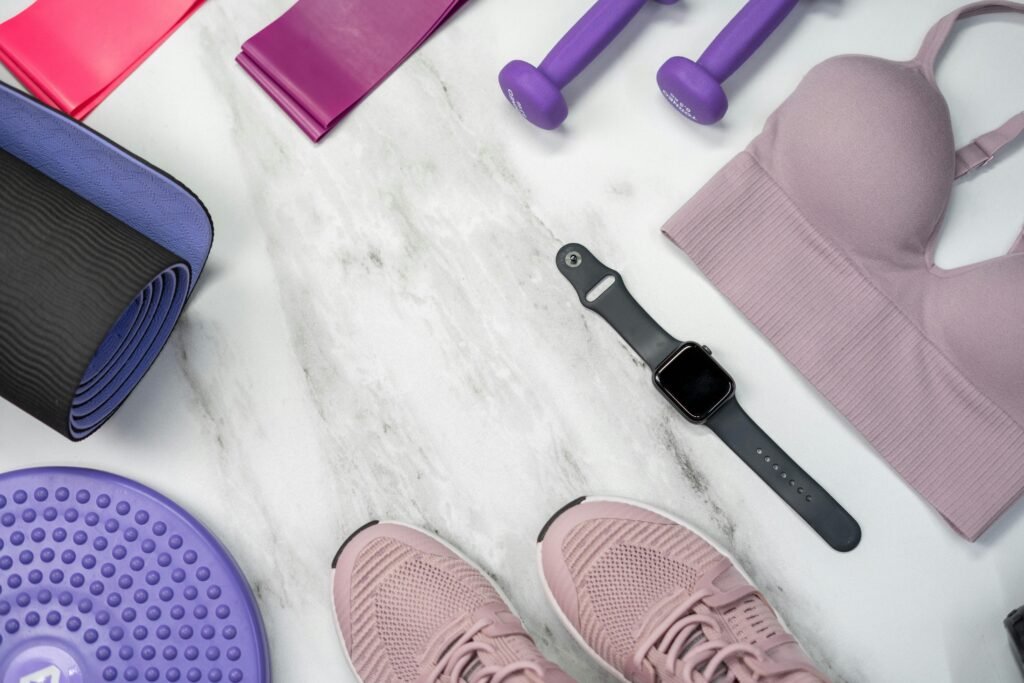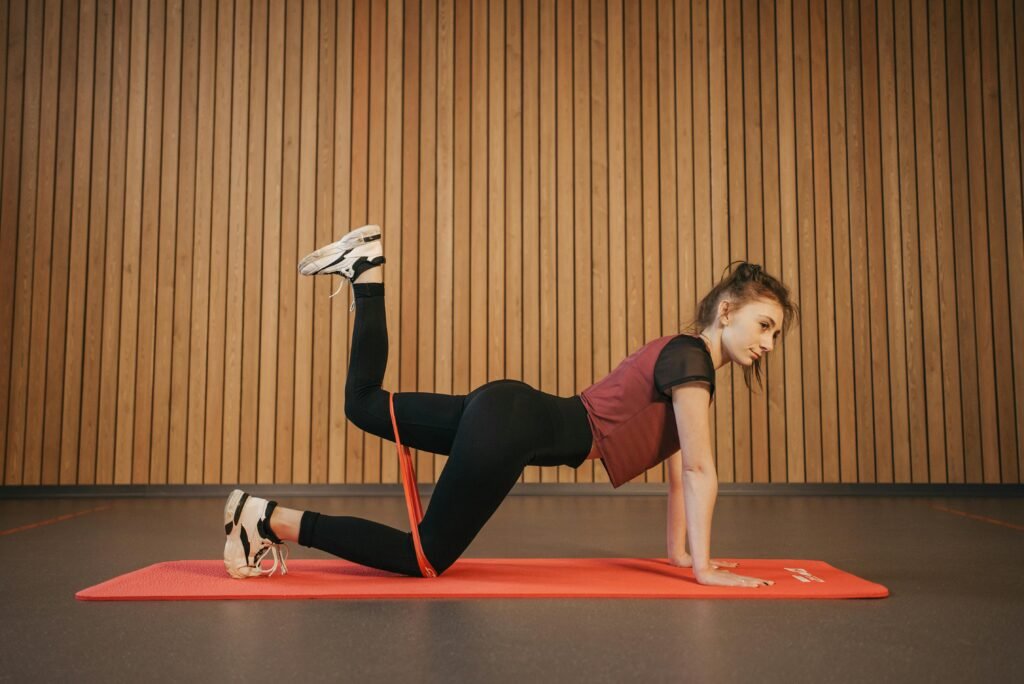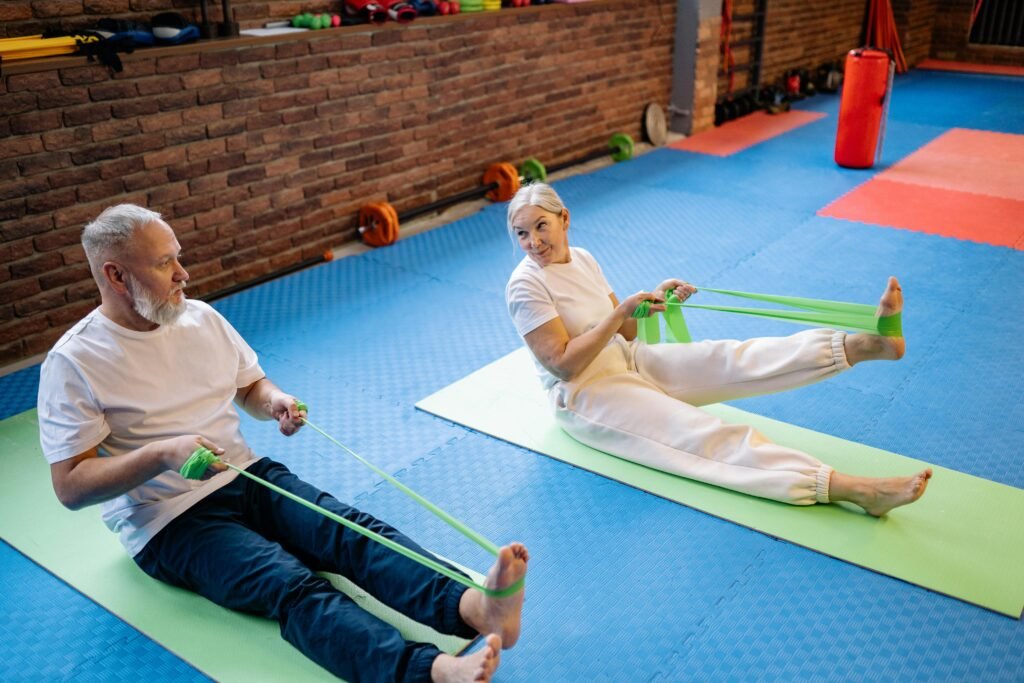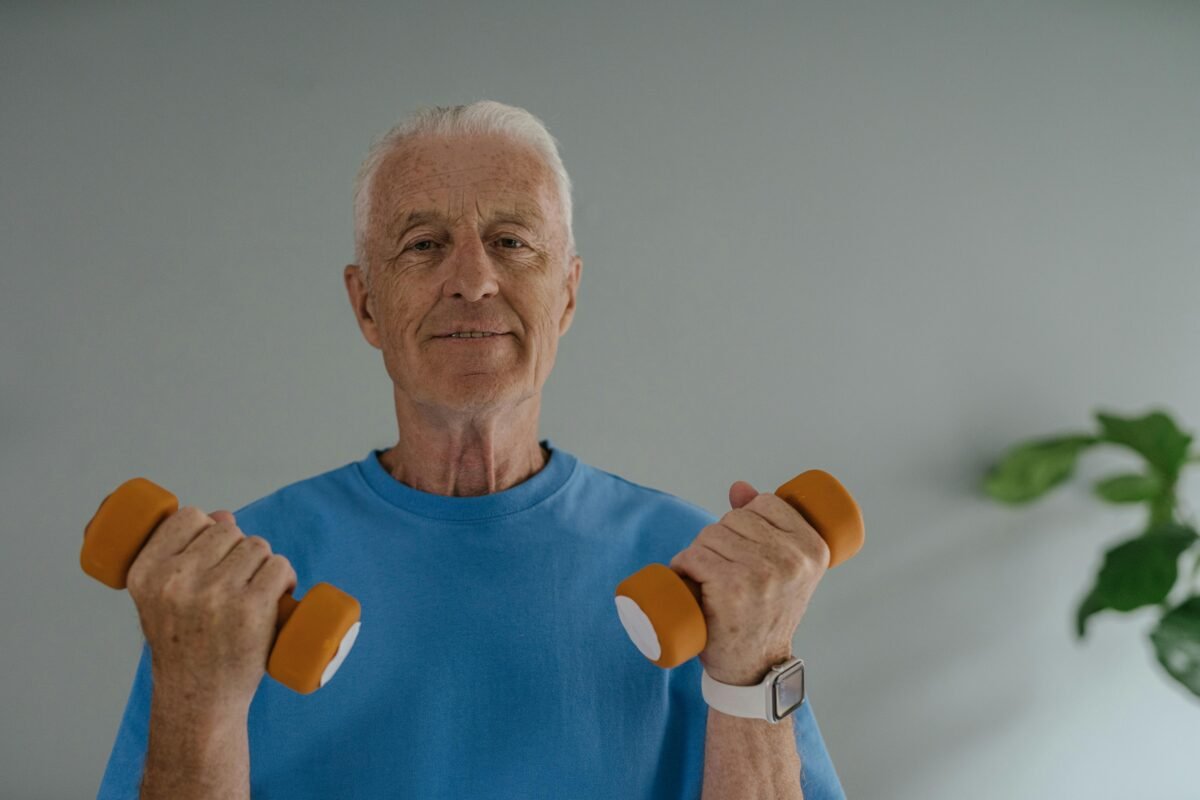
Middle age is often when life starts to get better in many ways, but it’s also a critical time for health. Starting from the age of 30, the human body loses about 3-5% of its muscle mass every decade. This muscle loss can lead to sarcopenia, reducing strength, endurance, and mobility, ultimately increasing the risk of falls and injuries later in life. The good news is that middle-aged individuals can take steps to slow down this process. Combining resistance training, maintaining a balanced diet, and staying active can help preserve muscle mass and promote overall health. Here are seven of the best exercises for middle-aged adults to combat aging.
1. Dumbbell Shoulder Press
Benefits: Strengthens the upper body, including the chest, shoulders, and triceps, which are crucial for everyday activities like transitioning from lying to sitting positions, pushing shopping carts, and lifting objects overhead.
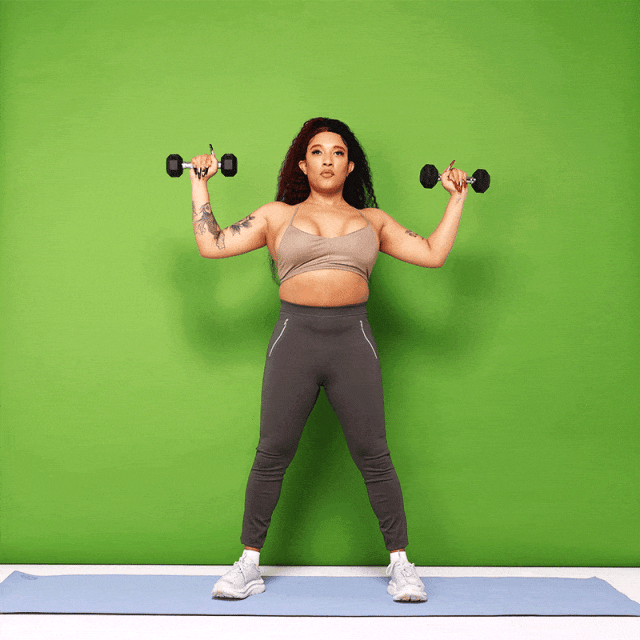
How-To:
- Stand with feet shoulder-width apart.
- Hold a dumbbell in each hand at shoulder height, palms facing forward.
- Press the dumbbells upward until your arms are fully extended.
- Slowly lower the dumbbells back to the starting position. This completes one repetition.
2. Bent-Over Rows
Benefits: Targets the back and biceps, improving posture, preventing shoulder and neck pain, and counteracting the effects of a sedentary lifestyle. Also improves grip strength, which correlates positively with longevity.
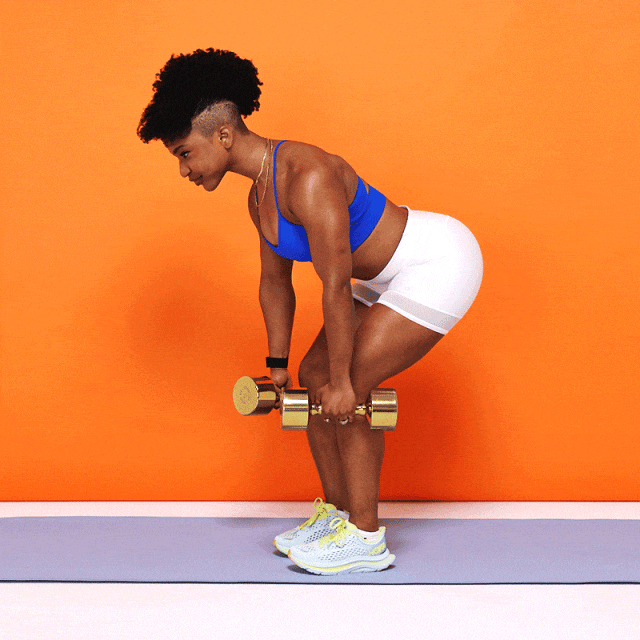
How-To:
- Stand with feet hip-width apart, holding a dumbbell in each hand.
- Engage your core and hinge forward at the hips, pushing your buttocks backward.
- Bend your knees slightly and keep your back flat.
- Look at the ground just ahead of your feet to keep your neck comfortable.
- Pull the weights toward your chest, keeping elbows close to your body, and squeeze your shoulder blades together for two seconds.
- Lower the weights slowly to the starting position. This completes one repetition.
3. Romanian Deadlifts
Benefits: Primarily targets the glutes, hamstrings, and lower back, enhancing functional movement and reducing injury risk as muscle mass naturally declines with age. Also teaches proper form for bending and picking up objects from the floor without straining the back.
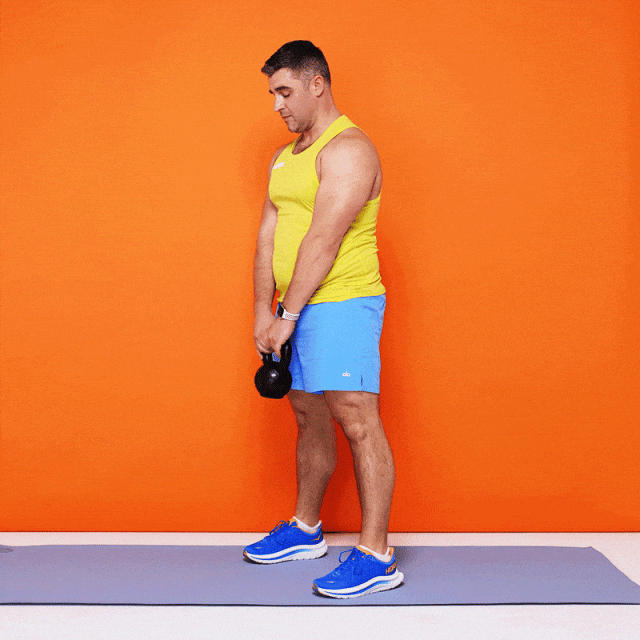
How-To:
- Start standing with feet hip-width apart.
- Hold a kettlebell or barbell in front of your thighs.
- Hinge at the hips, pushing them backward while keeping your back flat.
- Keep your knees aligned over your heels, and your shins perpendicular to the ground.
- As you lower the weight, keep your shoulder blades retracted and head aligned.
- Feel the stretch in your hamstrings, then push your hips forward to return to the starting position. This completes one repetition.
4. Goblet Squats
Benefits: Essential for daily activities like sitting, standing, and climbing stairs, especially important for maintaining independence and functionality as you age. Also strengthens the lower body significantly.
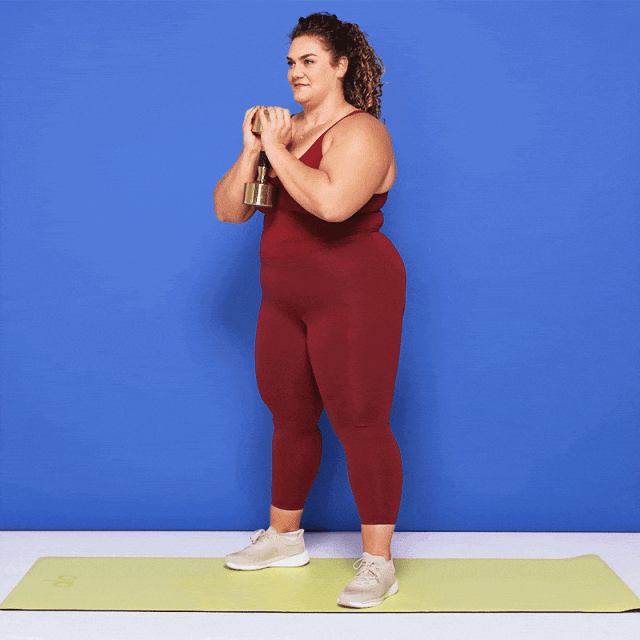
How-To:
- Stand with feet slightly wider than hip-width, toes pointing slightly outward.
- Hold a dumbbell vertically in front of your chest.
- Shift your weight onto your heels, push your hips back, and bend your knees to squat down.
- Keep your chest lifted and back flat.
- Push through your heels to stand up, squeezing your glutes at the top. This completes one repetition.
5. Forward and Reverse Lunges
Benefits: Improves balance and stability, crucial as balance tends to decline with age. Mimics movements like climbing stairs, hiking, or getting up from the floor.
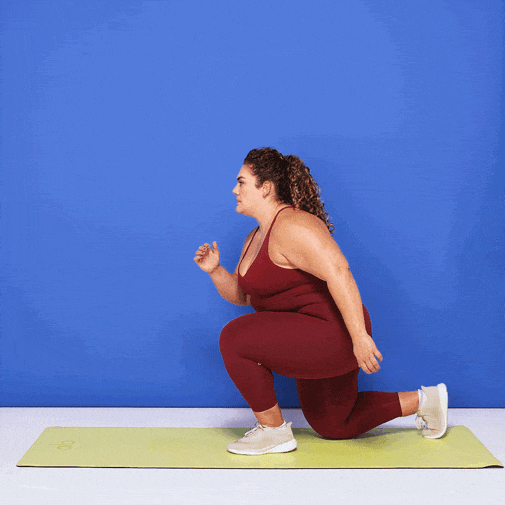
How-To:
- Stand with feet together, hands on your hips.
- Step forward with one leg, lowering your back knee toward the floor.
- Push off your front heel to return to the starting position.
- Step back with the same leg, lowering your back knee almost to the floor.
- Return to the starting position. This completes one repetition.
6. Windmills
Benefits: Enhances rotational strength and flexibility needed for daily activities such as twisting and reaching, which become more challenging with age.
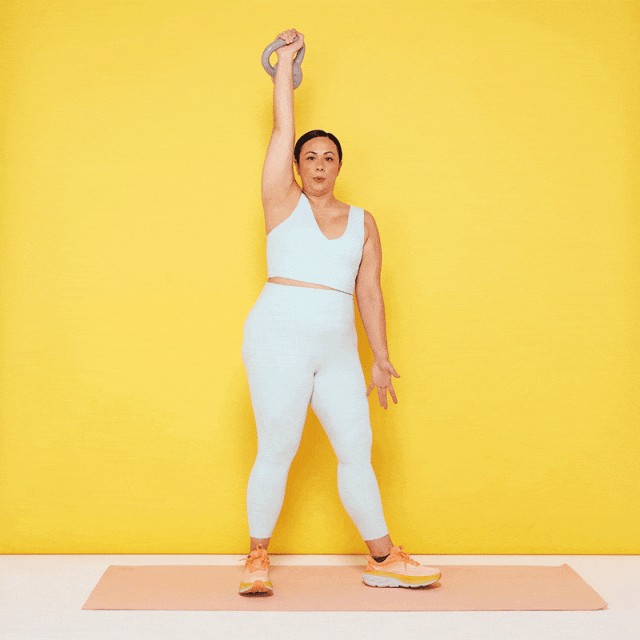
How-To:
- Stand with feet slightly wider than shoulder-width.
- Turn your left foot out at a 90-degree angle.
- Extend your right arm toward the ceiling, left arm hanging by your side.
- Engage your core and push your hips to the right.
- Slide your left hand down your left leg toward your ankle without putting pressure on the leg; use your core for stability.
- Your left arm should remain perpendicular to the ground, and your right leg should stay straight.
- Pause, then push through your feet to rise back up, keeping your core engaged and spine straight. This completes one repetition. Switch sides after completing a set.
7. Plank
Benefits: Strengthens the core muscles, essential for preventing injuries and improving overall core strength, aiding in better posture and functional movements like carrying groceries or balancing on a moving train.
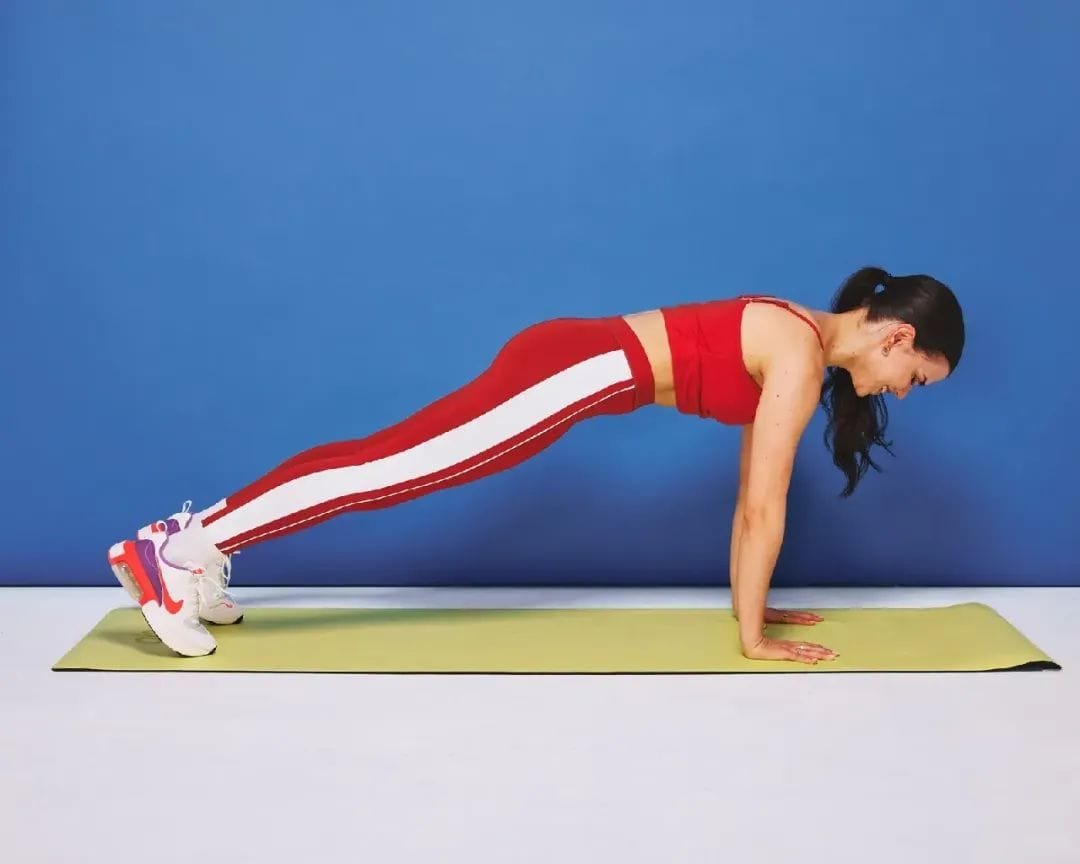
How-To:
- Lie face down with forearms and toes on the ground, elbows directly under your shoulders.
- Tighten your abdominal muscles and pull your navel toward your spine.
- Keep your torso straight, forming a line from ears to toes.
- Hold this position for 30, 45, or 60 seconds.
Training Plan Suggestions
- Frequency: Aim to exercise three times a week.
- Rest: Allow at least 24 hours between workout sessions.
- Sets and Reps: Perform 2-4 sets of each exercise, with 8-12 repetitions per set.
- Rest Between Sets: Rest for 30 seconds between sets.
- Progression: Gradually increase the weight, sets, and repetitions as your strength improves to achieve progressive overload and build stronger muscles.

